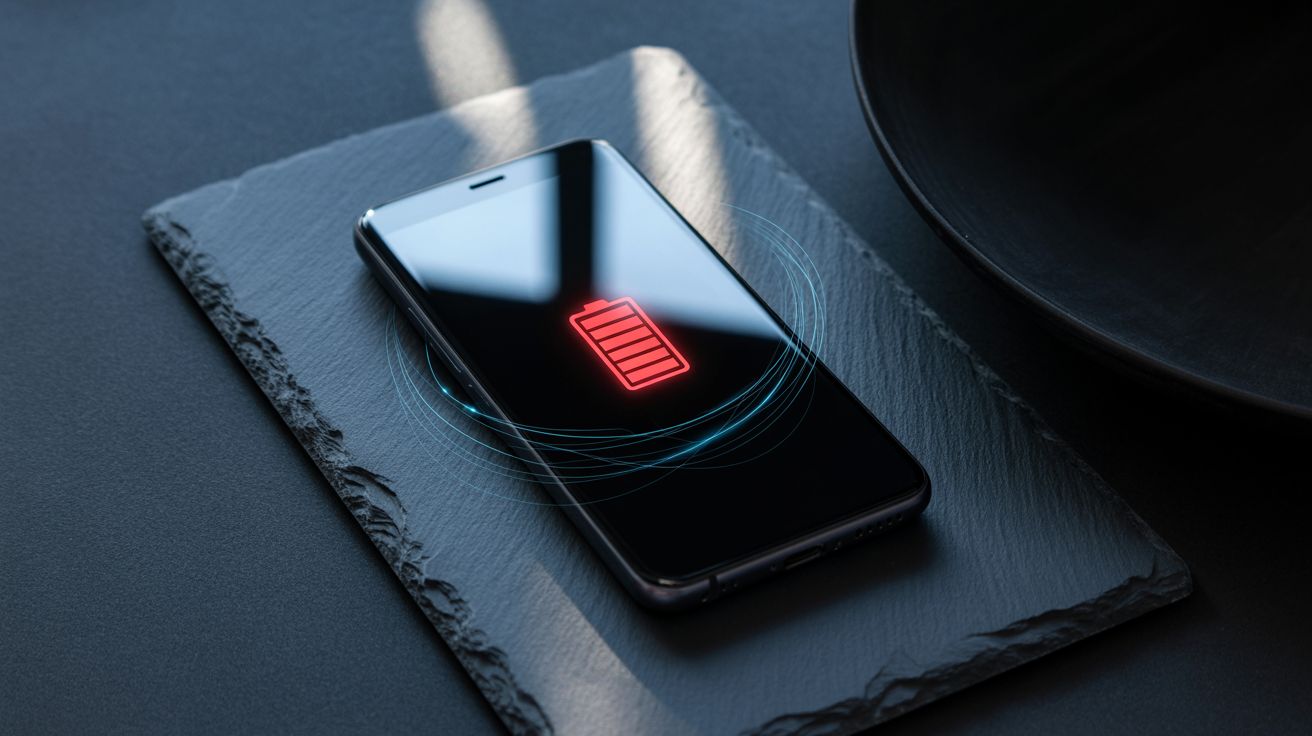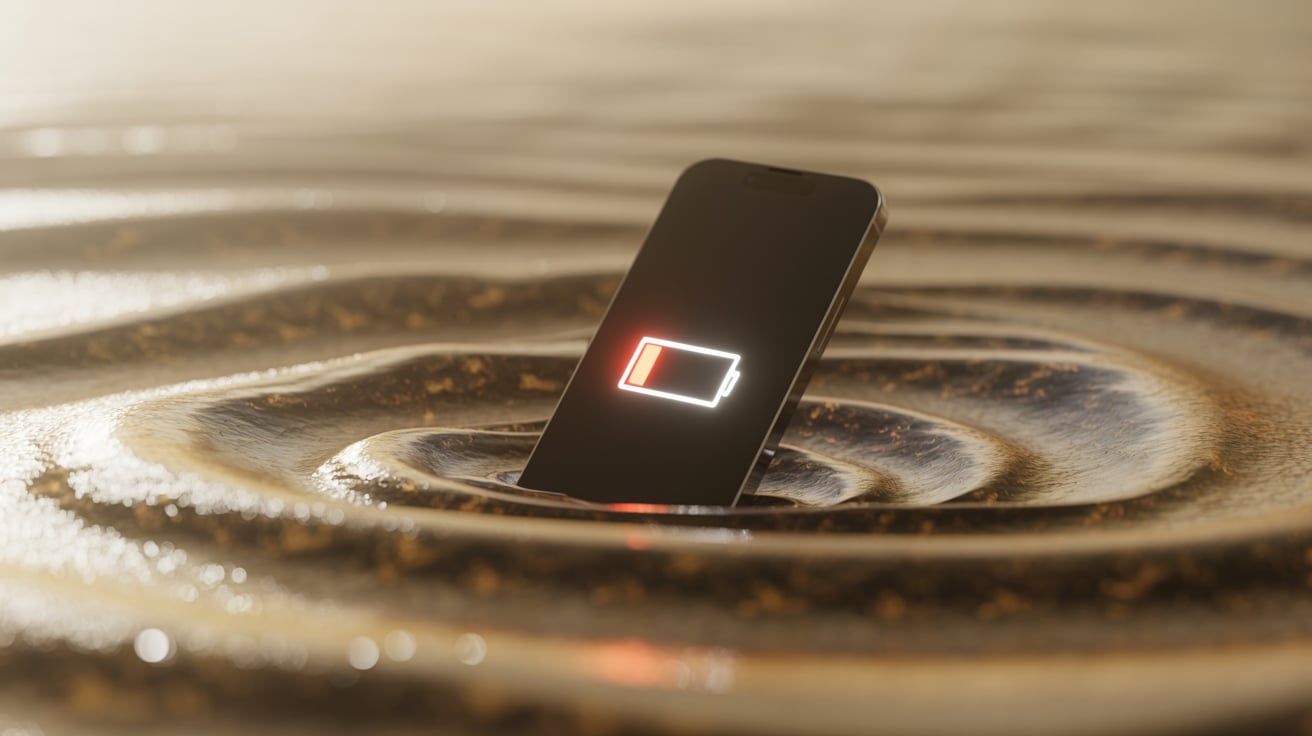The One App That's Secretly Draining Your Battery (It's Not What You Think)
Introduction: The Phantom Battery Drain
Ever notice how your phone battery seems to vanish into thin air, even when you're not actively using it? You check your battery usage stats, and the usual suspects – social media, streaming services, games – are all accounted for. But there's still a significant chunk of power unaccounted for, a phantom drain that leaves you scratching your head. We've all been there, desperately searching for an outlet before our digital lifeline flatlines. The culprit might be hiding in plain sight, an app you use every day, but one that's secretly guzzling power in the background.
It's not always the flashy, resource-intensive apps that are the problem. Sometimes, the most insidious battery drain comes from seemingly innocuous applications that are constantly running in the background, quietly consuming processing power and data. These apps, often designed for convenience and seamless integration, can become major energy hogs if not properly managed. Let's dive into the surprising world of battery drain and uncover the real offender.
The Usual Suspects (and Why They're Not Always to Blame)
Before we reveal the true battery drain culprit, let's quickly address the apps that typically get blamed. Social media apps like Facebook, Instagram, and TikTok are notorious for their constant notifications, background activity, and data usage. Streaming services like Netflix and Spotify can quickly deplete your battery, especially when used over cellular data. And of course, graphically intensive games are well-known power consumers. These apps certainly contribute to battery drain, but they're often easy to identify and manage. You can limit their background activity, reduce notification frequency, or simply use them less often.
However, even after addressing these obvious offenders, you might still find your battery draining faster than expected. This is because the real culprit is often an app that operates more subtly, constantly working in the background without drawing much attention to itself. It's the silent assassin of your battery life, and it's time to expose it.
Location Services: The Silent Power Thief
The app we're talking about is any app that heavily relies on location services. While seemingly harmless, these apps are constantly pinging your GPS, Wi-Fi, and cellular data to pinpoint your location. This constant activity consumes a significant amount of power, even when you're not actively using the app. Think about navigation apps like Google Maps or Waze, ride-sharing apps like Uber or Lyft, and even social media apps that offer location-based features. These apps are incredibly useful, but they can also be major battery drainers if not properly configured.
The problem isn't necessarily the apps themselves, but rather how they're configured to use location services. Many apps request "Always Allow" location access, meaning they can track your location even when you're not actively using them. This constant tracking can quickly deplete your battery, especially if you have multiple apps with this permission enabled. The key is to understand how each app uses your location and adjust the settings accordingly.
Understanding Location Permissions: A Crucial Step
To combat the location services battery drain, you need to understand the different location permission options available on your smartphone. Typically, you'll have three options: "Always Allow," "Allow While Using App," and "Never Allow." "Always Allow" grants the app constant access to your location, even when it's running in the background. This is the most power-intensive option and should only be granted to apps that truly require constant location tracking, such as navigation apps when you're actively using them.
"Allow While Using App" grants the app access to your location only when it's actively open and in use. This is a more battery-friendly option for apps that need location data for specific features, such as ride-sharing apps when you're requesting a ride. "Never Allow" completely denies the app access to your location. This is the most battery-friendly option, but it will obviously disable any location-based features within the app. Carefully consider the functionality of each app and choose the permission that best balances battery life and usability.
Auditing Your Apps: Finding the Culprits
Now that you understand the different location permissions, it's time to audit your apps and identify the ones that are excessively using location services. On both iOS and Android, you can access a list of apps and their location permissions in the settings menu. Take a close look at the apps that have "Always Allow" permission and ask yourself if they truly need it. Are you actively using these apps for navigation or location-based services on a regular basis? If not, consider changing the permission to "Allow While Using App" or even "Never Allow."
Pay special attention to apps that you rarely use but still have "Always Allow" permission. These are prime candidates for permission changes. You might be surprised to find apps that you haven't opened in months still tracking your location in the background. Regularly auditing your apps and adjusting their location permissions is a crucial step in optimizing your battery life. This digital housekeeping can make a significant difference.
Optimizing Location Settings: Practical Tips
Beyond adjusting individual app permissions, there are other ways to optimize your location settings for better battery life. Consider disabling location services altogether when you don't need them. This can be done through the quick settings menu on most smartphones. When you need to use location-based apps, simply re-enable location services temporarily. Another tip is to use Wi-Fi whenever possible, as it's generally more power-efficient than GPS for location tracking. When connected to Wi-Fi, your phone can triangulate its location using nearby Wi-Fi networks, which consumes less battery than constantly pinging GPS satellites.
Furthermore, explore the location accuracy settings on your phone. Some phones offer different location accuracy modes, such as "High Accuracy," "Battery Saving," and "Device Only." "High Accuracy" uses GPS, Wi-Fi, and cellular data for the most precise location tracking, but it also consumes the most battery. "Battery Saving" uses only Wi-Fi and cellular data, which is less accurate but more power-efficient. "Device Only" uses only GPS, which can be useful in areas with poor Wi-Fi or cellular coverage, but it can also drain your battery quickly. Experiment with these different modes to find the best balance between accuracy and battery life for your needs. The AI in your phone is constantly learning your usage patterns, but you can manually adjust these settings for optimal performance.
Beyond Location: Other Battery Drain Culprits
While location services are often the biggest culprit, other factors can also contribute to battery drain. Push notifications, for example, can constantly wake up your phone and consume power. Consider disabling notifications for apps that you don't need to be constantly alerted about. Background app refresh, which allows apps to update their content in the background, can also drain your battery. You can disable background app refresh for individual apps or globally in the settings menu. Also, be mindful of widgets on your home screen, as they can constantly update and consume resources. Remove any widgets that you don't actively use.
Finally, consider the age of your battery. Over time, smartphone batteries degrade and lose their capacity. If you've had your phone for several years, it might be time to consider replacing the battery or upgrading to a new device. Software updates can also sometimes impact battery life, so make sure you're running the latest version of your operating system and apps. Keep your gadgets updated to ensure optimal performance and battery efficiency.
Take Control of Your Battery: A Call to Action
By understanding how location services and other background activities impact your battery life, you can take control of your phone's power consumption and extend its usage time. Start by auditing your apps and adjusting their location permissions. Experiment with different location accuracy settings and disable unnecessary notifications and background app refresh. By making these simple changes, you can significantly improve your battery life and avoid the dreaded low-battery anxiety. Remember, a little bit of digital housekeeping can go a long way in preserving your battery and keeping you connected throughout the day.
Don't let your battery drain be a mystery. Take action today and reclaim your phone's power. Share this article with your friends and family to help them optimize their battery life as well. Let's all become more mindful of our digital habits and make the most of our devices without constantly worrying about running out of power. Go forth and conquer your battery drain!



